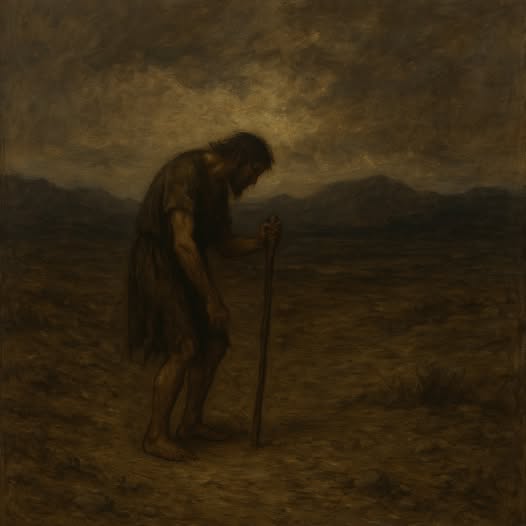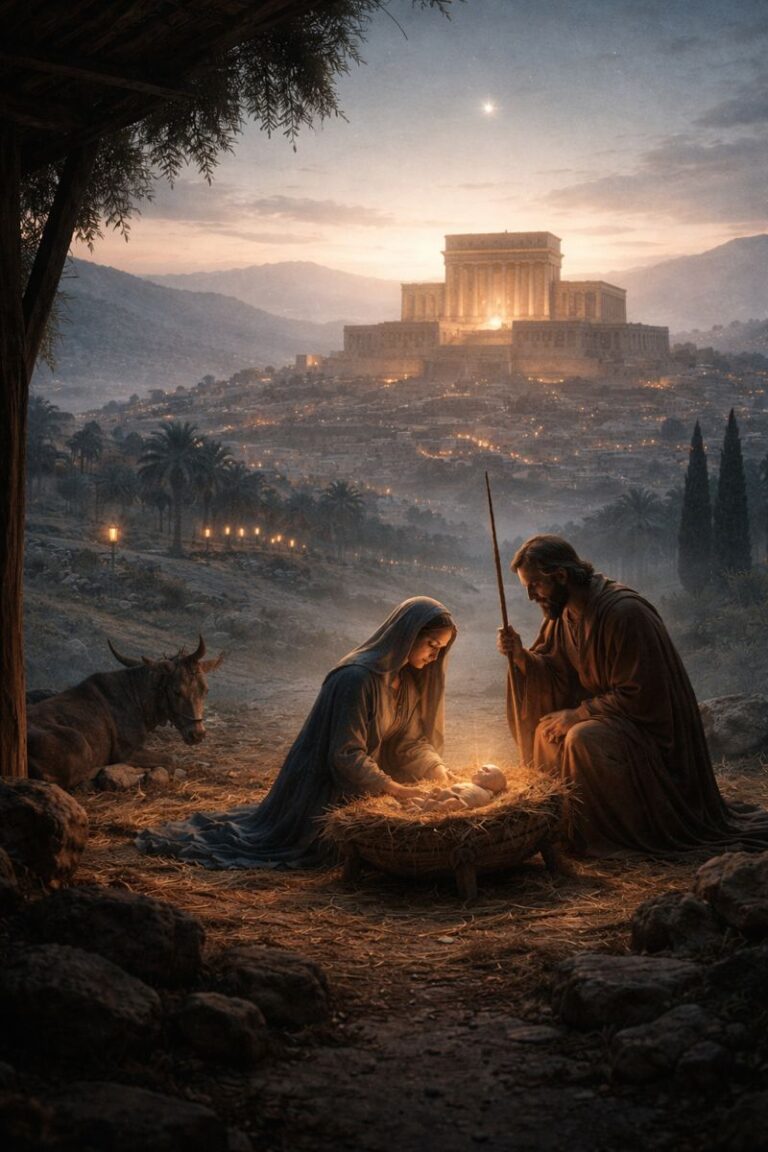
The story of Cain and Abel is one of the most unsettling narratives in Genesis. Cain’s murder of his brother leads not only to personal judgment, but to a far-reaching spiritual exile. When Genesis 4:16 says that Cain “went out from the presence of the Lord and settled in the land of Nod, east of Eden,” it’s not offering a historical travelogue. It’s delivering a profound theological statement. This article explores what the Land of Nod represents and how misunderstanding its symbolism has led to generations of confusion among both believers and critics.
What Is the Land of Nod?
The word “Nod” comes from the Hebrew root “נוד” (nûd), meaning “to wander.” This is not coincidental. It directly corresponds to Cain’s punishment: to be a fugitive and a wanderer on the earth. Nod isn’t a plot of land with borders and towns. It is the embodiment of alienation. It’s what happens when someone is cut off from divine presence and community. It’s a literary and theological device signaling Cain’s descent into spiritual isolation.
The text says Nod was “east of Eden,” and that direction carries heavy symbolic weight. Eastward movement in Genesis always marks a move away from God. Adam and Eve were driven east. Cain went further east. Lot moves east and settles near Sodom. East is not cartographic; it’s theological. It tells us about trajectory, not terrain.
There is no indication anywhere in Scripture that Nod was a literal land occupied by other people or established as a geographic territory. To treat it as such is to import modern assumptions onto an ancient text that was never concerned with GPS coordinates. Nod is not a location to be discovered but a condition to be understood. Cain was not relocated; he was exiled. That exile was not primarily spatial. It was relational and spiritual.
The Unintended Consequences of Forcing Symbolism to Be Literal
Misreading symbolic elements as literal geography or historical record doesn’t just confuse interpretation; it has historically led to theological and social disasters. One of the clearest examples is the development of the gap theory, which tried to insert vast ages between Genesis 1:1 and 1:2 to reconcile Scripture with early geological claims. But this effort to harmonize science and Scripture through unwarranted literalism soon spiraled into something far worse.
By suggesting a pre-Adamic race to populate the ancient world before Adam, the gap theory gave rise to deeply racist ideologies that claimed certain groups of people were not descended from Adam at all. These heretical interpretations were used to justify slavery, segregation, and the dehumanization of others. All of it was built on a faulty attempt to force the symbolic and theological language of Genesis into modern scientific categories.
This is the danger of abusing the text: not just misunderstanding it, but weaponizing it. The Bible never supported these conclusions, but poor hermeneutics provided cover for people who wanted to legitimize their sin through distorted theology. When we read symbolic texts as literal puzzles to be solved, or worse, as loopholes for our prejudices, we don’t just misinterpret Scripture. We betray it.
Nod as Exile, Not Geography
Nod was not a foreign country Cain moved to. It was the lived experience of being removed from God. The passage doesn’t care about where Cain went; it emphasizes that he went out from the presence of the Lord. That is the real location of Nod: wherever God is not.
This fits the broader pattern of exile in Scripture. Adam and Eve are exiled from Eden. Israel is exiled from the land. Even when physically present, the prophets describe the people as spiritually distant. Exile is not simply a matter of physical displacement. It’s the condition of being relationally severed from God.
Cain’s wandering was the first such exile, and the term “Nod” becomes a concise expression of what it means to live under divine judgment without repentance. It is the theological space of isolation, shame, and disconnection.
Conclusion
The Land of Nod is not a lost nation. It’s not a location to be mapped. It’s the lived reality of spiritual separation. Cain’s story is not an anthropological account of early settlement patterns. It’s a warning about what happens when someone refuses to take responsibility for sin, lashes out at others, and then walks away from the only One who can offer redemption.
When readers force symbolic texts into literal frameworks, they don’t just misread Scripture; they rob it of its richness. At the same time, reducing all details to metaphor flattens the narrative. The Bible often places literal actions within symbolic settings. Cain may have built a city, but he built it in the land of exile. Nod remains relevant not because we can find it, but because we can still enter it. It’s the place where people wander when they refuse grace, and it’s the condition from which only God can rescue.
Discussion Questions
- How does understanding the Land of Nod as a symbolic condition rather than a literal location affect the way we interpret Cain’s story?
- Why is it important to recognize the literary and theological intentions of early Genesis rather than reading it through modern categories?
- What are the dangers of using speculative interpretations, like the gap theory, to justify social or theological positions?
- How can Cain’s attempt to build a city be viewed as both a literal act and a theological statement within a symbolic setting?
- In what ways do we still “enter Nod” today when we persist in rebellion or refuse restoration?
Want to Know More?
- Michael S. Heiser – The Unseen Realm: Recovering the Supernatural Worldview of the Bible
Explores the spiritual context of early Genesis and how symbolic language communicates real historical and theological truths. - John H. Walton – The Lost World of Genesis One
A careful treatment of Genesis 1 in its Ancient Near Eastern context, showing how genre and purpose shape how we read Scripture. - Kenneth A. Mathews – Genesis 1–11:26 (New American Commentary)
An in-depth evangelical commentary that balances historical affirmation with literary and theological sensitivity. - Derek Kidner – Genesis: An Introduction and Commentary
Clear, concise, and rich with theological insight, Kidner’s work explores the structure and meaning of early Genesis. - Victor P. Hamilton – The Book of Genesis: Chapters 1–17 (NICOT)
A scholarly but accessible commentary providing detailed exegesis of the early chapters of Genesis, including the story of Cain.




